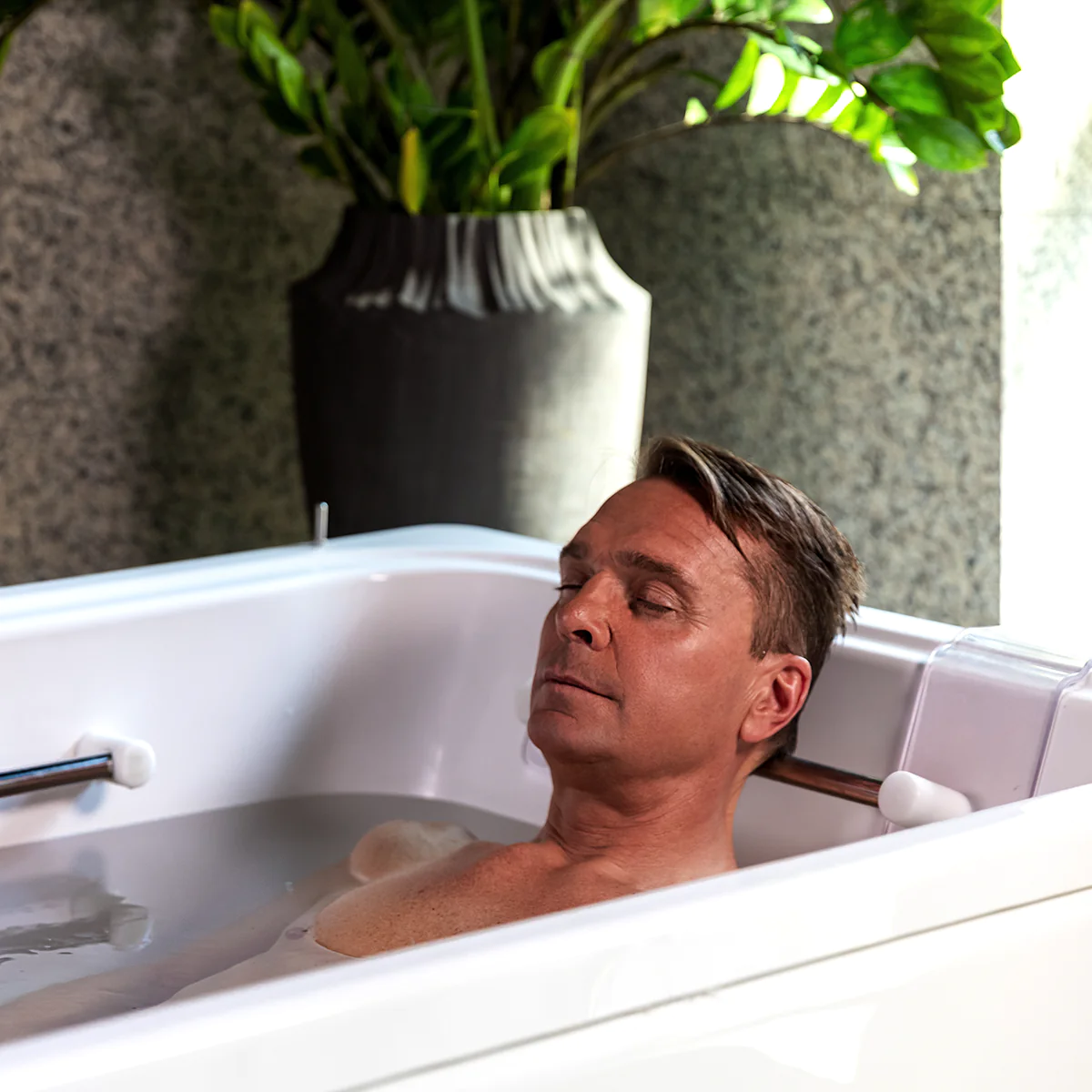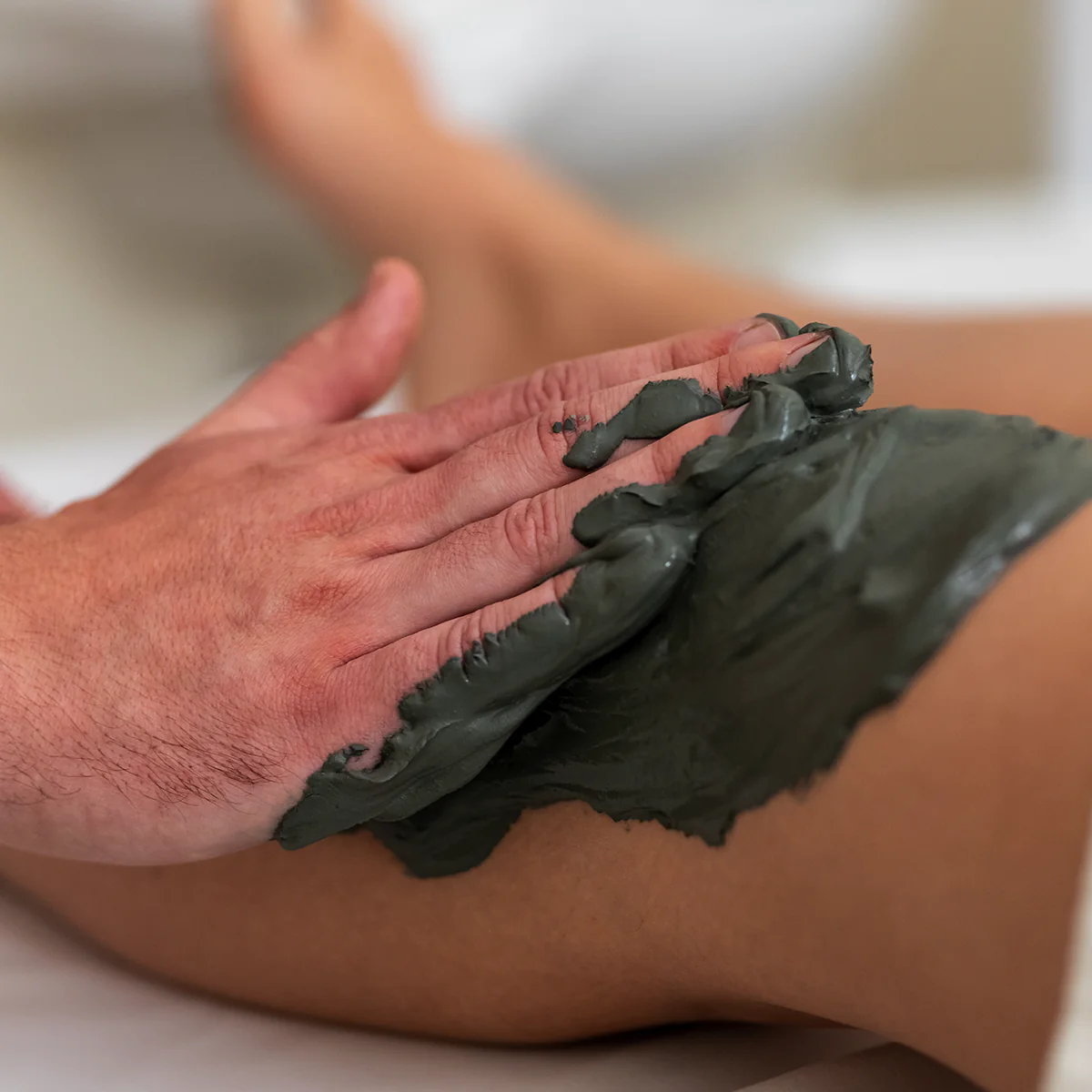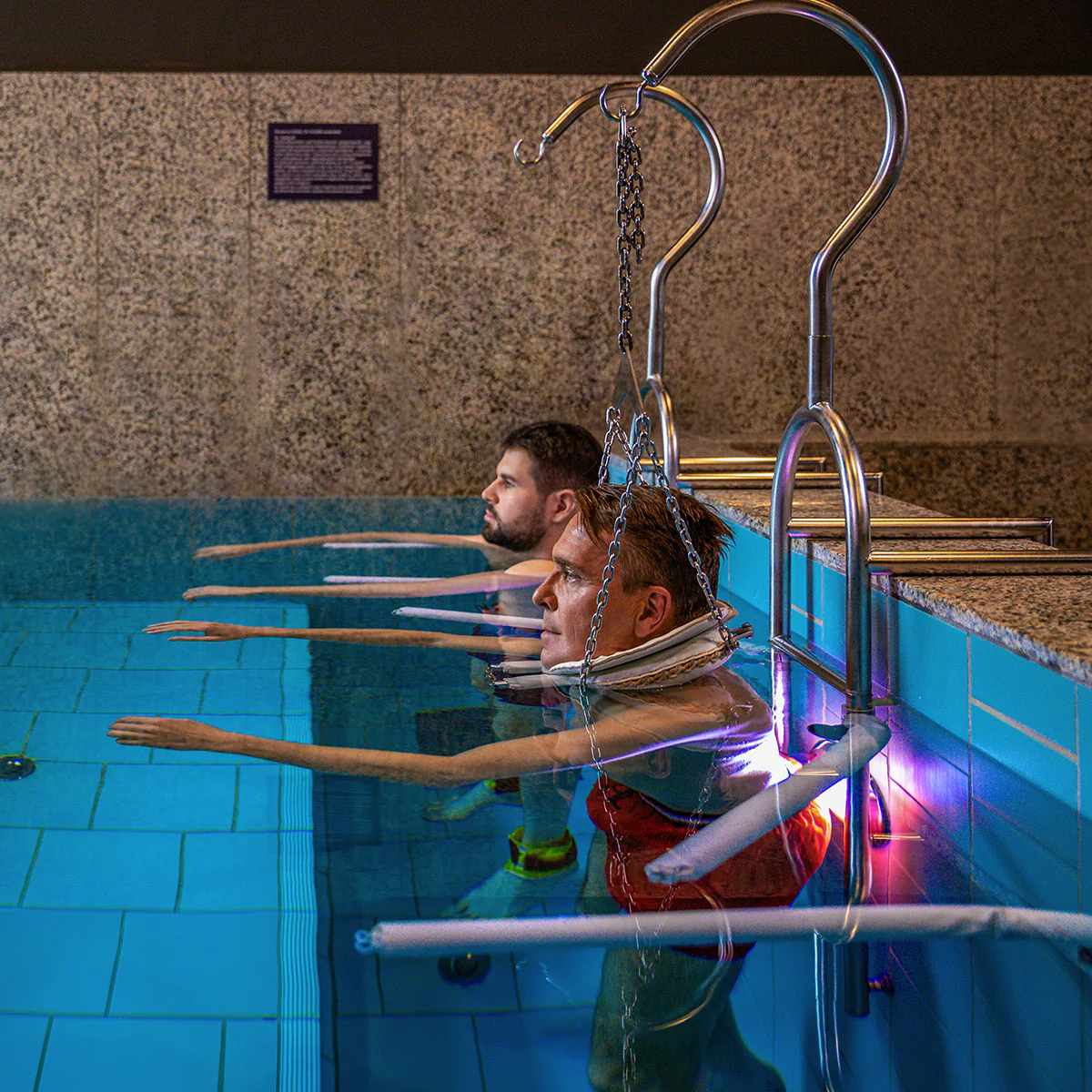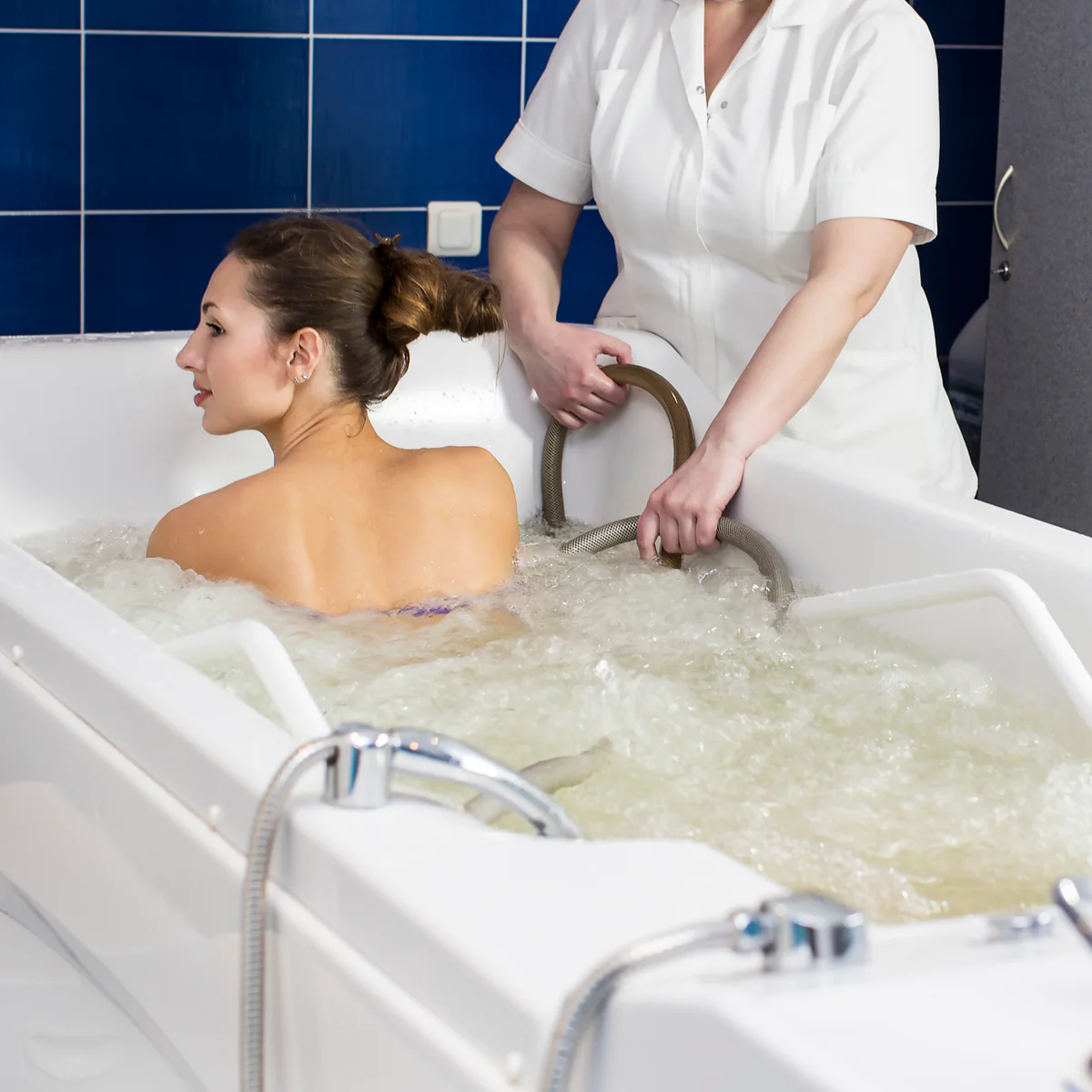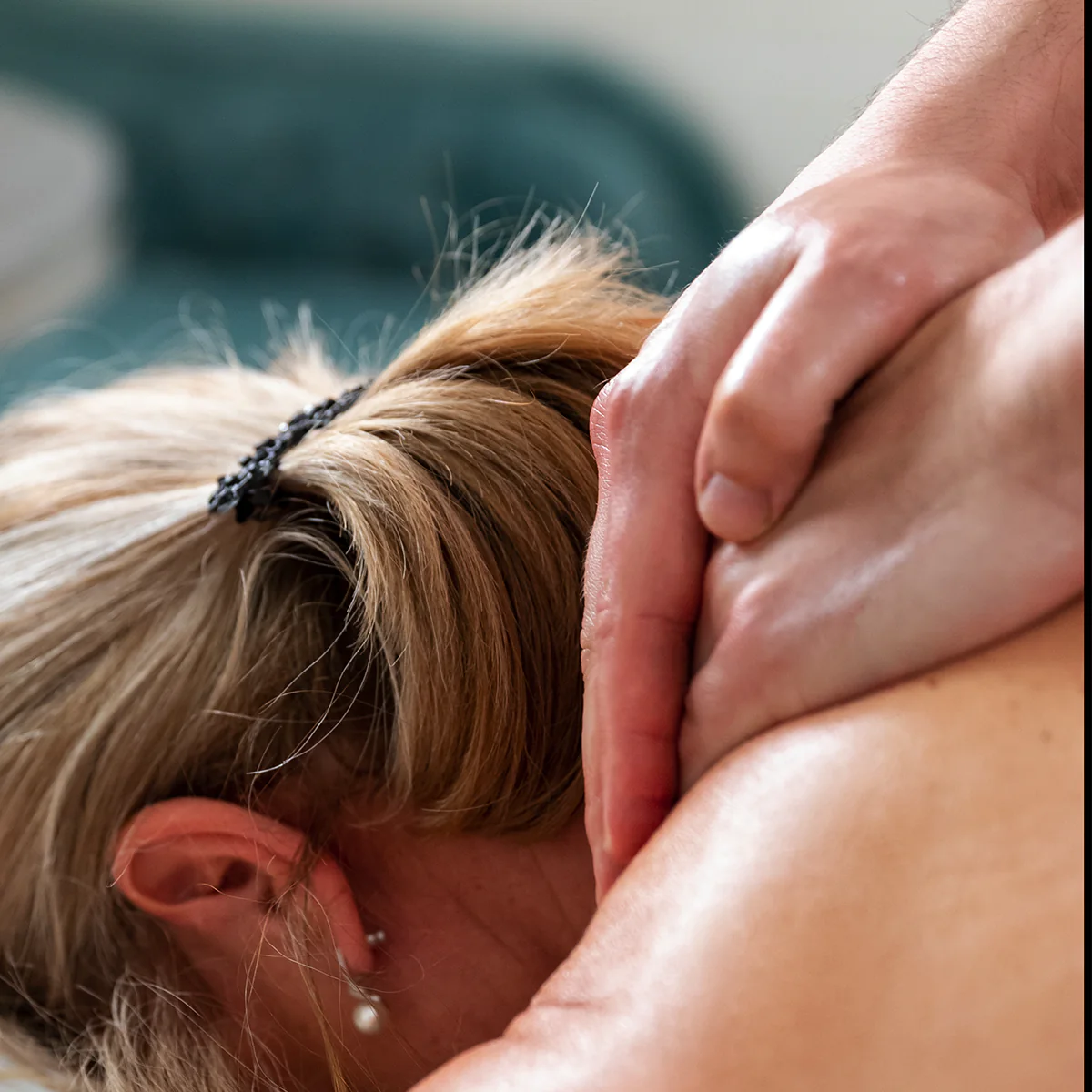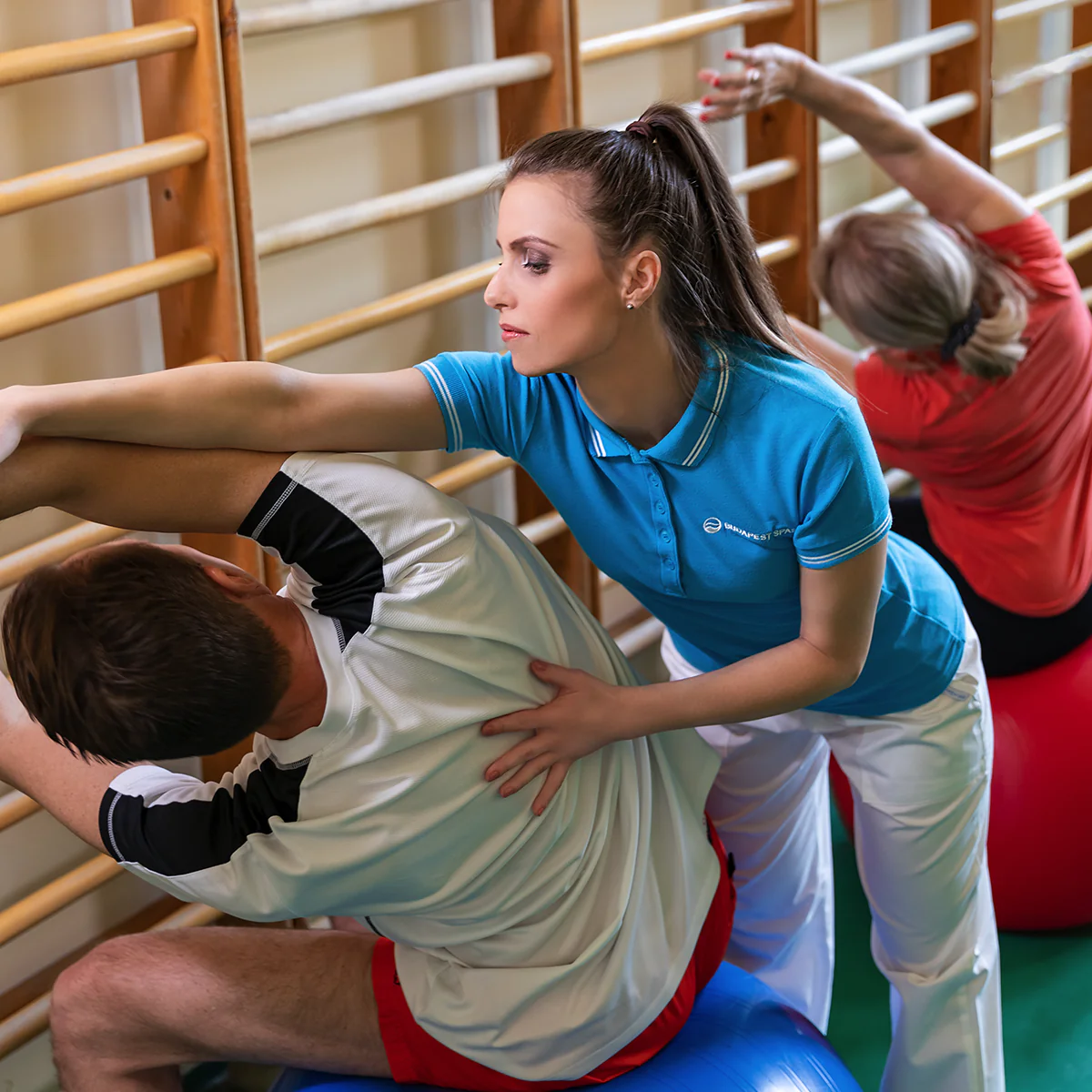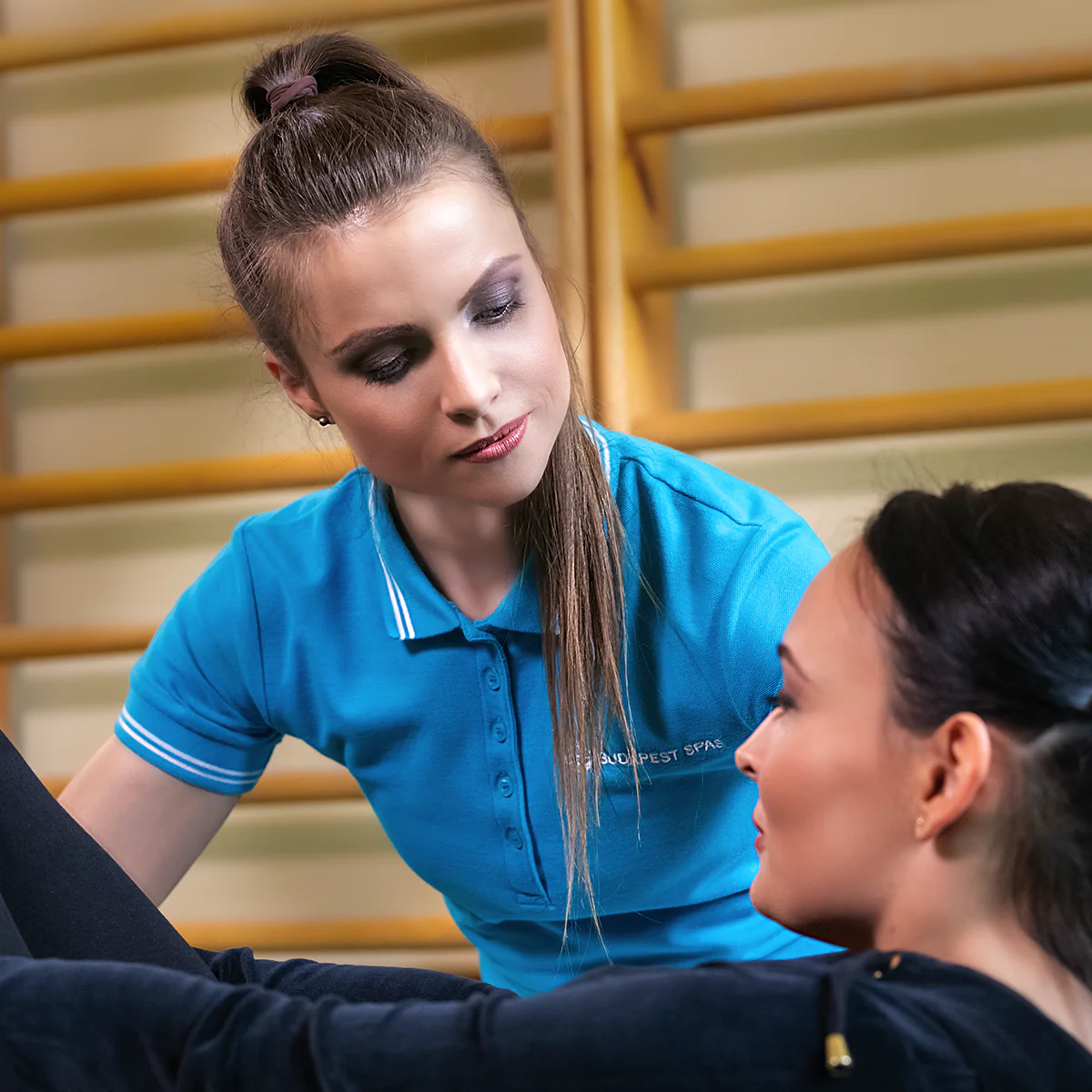
Thermal water pool therapy
The medicinal water of the Széchenyi Bath is a calcium–magnesium–hydrogen carbonate and sulphate thermal water containing sodium, and it also includes significant amounts of fluoride and metaboric acid. Its chemical composition, temperature, and physical properties (buoyancy, hydrostatic pressure, and the effects of warm water) collectively have a beneficial impact on the body. Warm water causes the blood vessels to dilate, enhances circulation, improves tissue metabolism, relaxes the muscles, lowers blood pressure and heart rate, while increasing cardiac performance.
Thermal water also has a balancing effect on the hormonal system, stimulates the body’s natural endorphin production, and strengthens the immune system.
When used as a course of treatment (10–15 sessions), it can positively influence blood sugar, cholesterol, and inflammatory markers, and it has antioxidant effects by reducing harmful free radicals. Resting in warm water lowers stress hormone levels, promotes relaxation, and improves overall wellbeing. (More information under the Prevention menu.)
Recommended bathing time: 20 minutes, after which the treatment can be repeated following a short rest.
